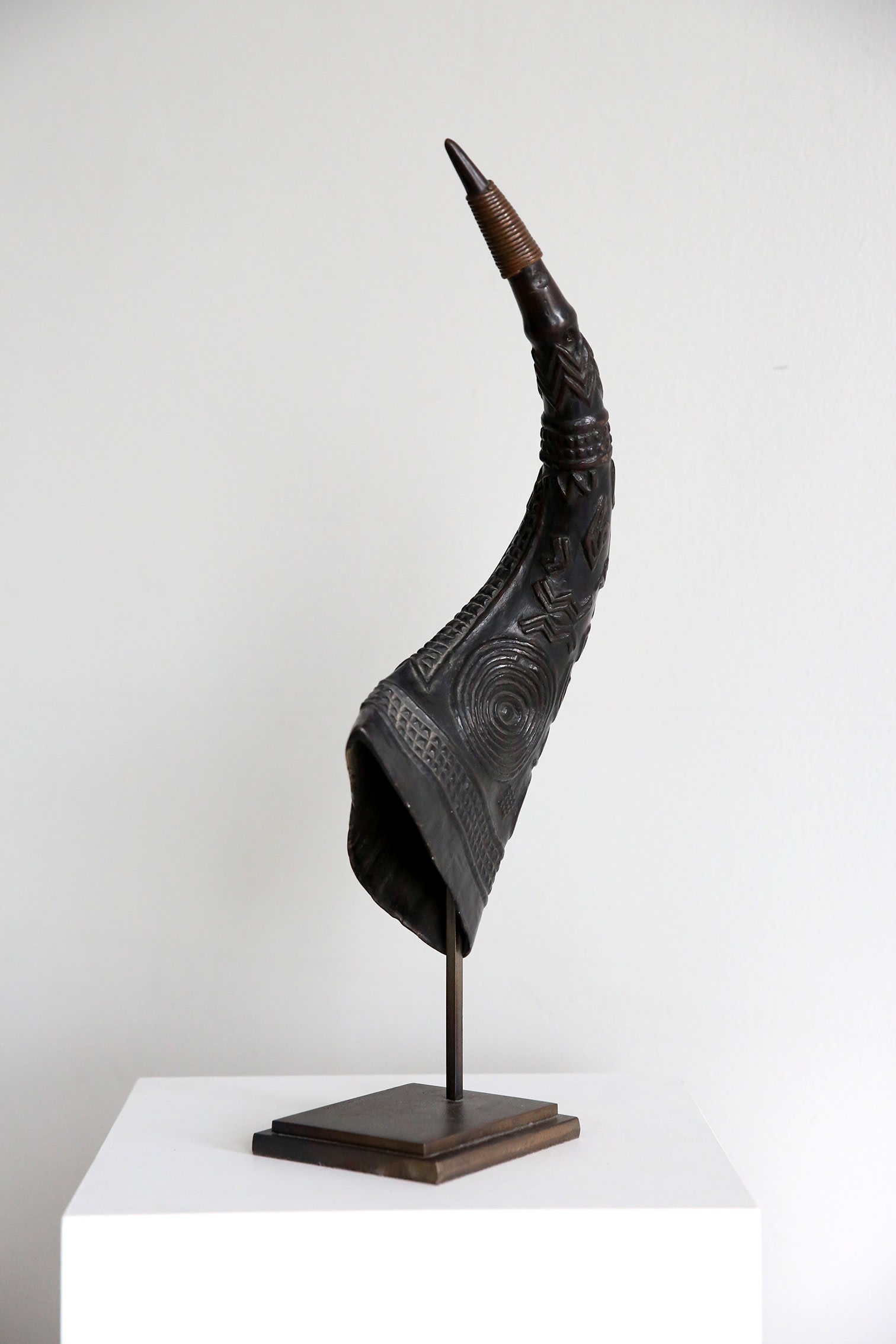

Eliot Elisofon visited the village of Bungamba (Bongamba, Bongaam) between Mweka and Luebo, in the Kuba region in 1970. The photograph depicts a high-ranking Kuba warrior wearing traditional costume, as well as symbolic adornments, for the state visit of the Nyim (King) Kot a Mbweeky III. (Photo source: Eliot Elisofon Photographic Archives, National Museum of African Art, F 3 KBA 5.0.1 EE 70)
Drinking horns and cups are among the many insignia that have denoted status in the highly hierarchical Kuba society since the kingdom’s foundation in the 17th century. Drinking vessels fashioned from the horns of the bush buffalo were exclusively used by specific Kuba noblemen as emblems of their title. The choice for this material must have been emblematic of the power of their owners.

The present buffalo horn features concentric circles, geometric shapes and beadlike bands carved in high relief that elegantly follow the natural contours of the horn to its pointed tip. A cord pierced through the tip of the horn allowed it to be worn by its owner as part of his insignia. The emphasis on titleholding and the competition for and the subsequent prestige that accrues to titleholders has historically been a dominant aspect of Kuba culture. Each tiled position had emblems, symbols, and praise names associated with it. This vibrant aspect of their culture was photographed in 1970 by Eliot Elisofon, observing several Kuba elders that still wore extensive regalia. A warrior is wearing several undecorated buffalo horns at the back of his belt. Older examples such as the present typically feature elaborate ornamentation. Scarification was a common form of body decoration among the Kuba, and the designs in high relief across the surface of this drinking horn mirrored the traditional raised patterns of scarified human skin.
